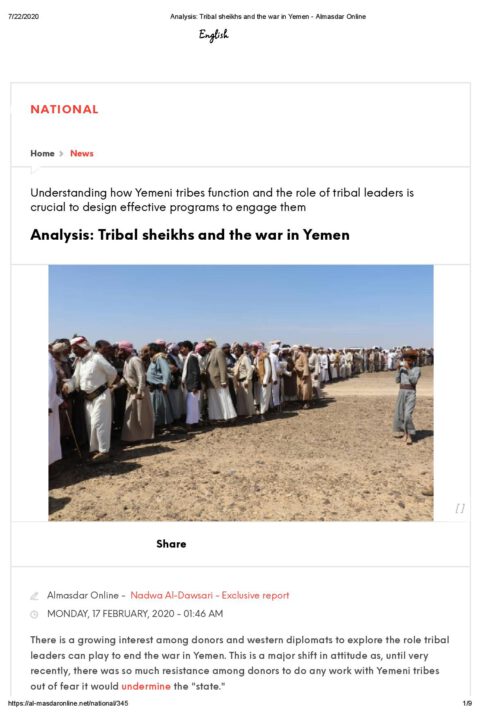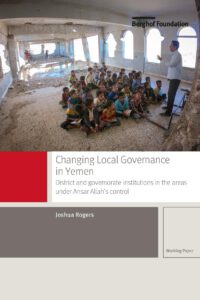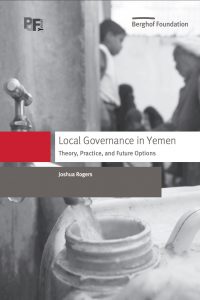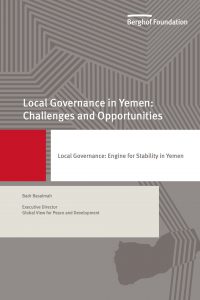
Short assessment of the impact of the war on tribal structures and the role of tribal leaders in recruitment, mediation, and deescalation
There is a growing interest among donors and western diplomats to explore the role tribal leaders can play to end the war in Yemen. This is a major shift in attitude as, until very recently, there was so much resistance among donors to do any work with Yemeni tribes out of fear it would undermine the “state.”
The role of tribal leaders is largely misunderstood among western observers and urban Yemenis alike. Their influence and power are often both oversimplified and exaggerated with assumptions that tribal leaders have absolute control and unchecked authority over their tribes. They are mistakenly described as “rulers,” almost small dictators, who possess absolute power, over isolated territories. Tribesmen are often portrayed as mercenaries who follow their tribal leaders’ orders.1For an example of flawed analysis of the role of tribal leaders, see https://www.voanews.com/middle-east/yemens-tribal-system-contributes-deepening-conflict
In reality, tribes are egalitarian, not hierarchical, social institutions and as such do not have a command-and-control structure as often assumed. The authority of tribal leaders largely depends on their ability to provide for their tribes. They can influence and persuade but not force their tribesmen to take a certain course. Men from tribes involved in fighting in frontline have chosen to side with Houthis or the government, many times against the will of their tribal leaders.2https://carnegieendowment.org/2012/04/24/tribal-governance-and-stability-in-yemen-pub-47838
Understanding how Yemeni tribes function and the role of tribal leaders is crucial to design effective programs to engage them. Overestimating the role of tribal leaders risks coming up with flawed interventions that might do more harm than good. Tribal leaders have much to offer but there are nevertheless major limitations to what they can do. This piece will look into the role of tribal leaders in areas where there is active fighting.




